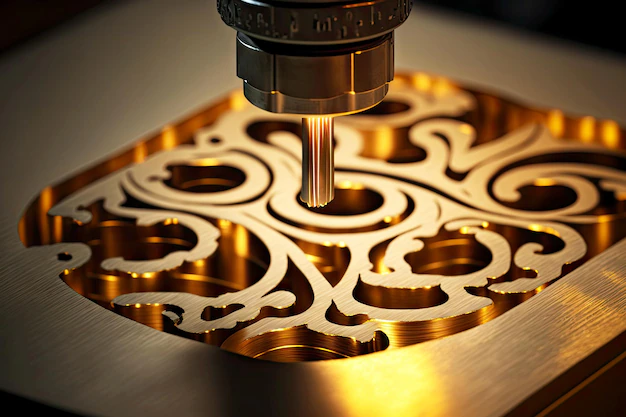Introduction:
A classic craft that exemplifies the deft blending of artistic expression with excellent execution is wood carving. The introduction of wood carving machines has completely changed how hobbyists and artists approach their work, even though traditional hand tools are still necessary for the job. Selecting the ideal wood carving machine is an important choice that will have a big impact on the effectiveness and caliber of your work. We will go over the most important things to think about when choosing a wood carving machine in this extensive guide, so you can make an informed choice that meets your needs.
Understanding Your Project Requirements:
Examining the needs of your project is crucial before diving into the realm of wood carving machines. A carving machine must have different features and capacities depending on the project. Think about the following elements:
- Project Size and Scale: Establish the scope and dimensions of your projects. While smaller projects can be completed with a compact machine, larger ones could call for a machine with a larger carving surface.
- Material Compatibility: Decide the kinds of wood or materials you want to sculpt. Certain machines work best with softwoods, while others work well with hardwoods or even materials that aren’t made of wood, like foam and plastic.
- Precision and Detail: Determine how much accuracy and specificity your tasks require. More accurate and high-resolution machines might be required for finer details.
- Speed and Efficiency: Think about how quickly you want to do your tasks. While slower, more accurate machines could be better for intricate work, faster carving machines are good for large-scale production.
Wood Carving Machine Types:
There are many different kinds of wood carving machines, and each one is designed to meet particular requirements and tastes. Making an informed choice requires knowing how these types differ from one another:
- CNC Routers: CNC (Computer Numerical Control) routers are multifunctional devices capable of engraving complex patterns in wood. They have many functions and can be used for both 2D and 3D carving.
- Engravers Using Lasers: Focused laser beams are utilized by laser engraving devices to etch designs into wood surfaces. They can engrave on a number of different materials and are great for detailed work.
- Wooden Lathes: For projects that are spherical or cylindrical, wood lathes are perfect. By rotating the workpiece, they enable the artist to use a variety of cutting tools to shape and carve the wood.
- Handheld Electric Carvers: Using handheld electric carving tools offers a more practical method. They provide more control over fine details and are appropriate for smaller tasks.
Key Features to Consider:
- Carving Area: The maximum dimensions of your projects are determined by the size of the carving area. Select a machine whose carving area can handle the sizes of your usual projects.
- Motor Power: The machine’s capacity to handle varying densities of wood is dependent on the motor power. Make sure the machine has enough power to handle the materials you want to carve.
- Speed Control: You can adjust the speed of the carving according to the complexity of your design using adjustable speed settings. This feature is essential to getting the best outcomes.
- Accuracy and Resolution: Increased precision and resolution guarantee that your device can accurately replicate fine details. Seek for devices with accurate control systems.
- Ease of Use: Think on the overall usability and user interface. Especially for novices, intuitive controls and easy-to-use software can greatly improve your carving experience.
- Durability and Build Quality: Long-term use requires a machine that is strong and resilient. Examine the carving machine’s building materials and build quality.
- Tool Compatibility: Make sure that a range of carving tools are compatible with the machine. This adaptability enables you to select the ideal instrument for various tasks.
- Dust Collection Mechanism: Dust from wood carving is produced in large quantities. In addition to extending the life of your equipment, an integrated dust collection system helps keep your workstation tidy.
Budgetary Considerations:
Given the vast range of prices for wood carving machines, your budget will undoubtedly be a major deciding factor. But it’s crucial to find a balance between the things you require and your financial limitations. Rather than going with the cheapest alternative available, think about the lasting advantages of investing in a higher-quality machine that satisfies the criteria of your project.
Researching and Comparing Brands:
After you have a firm grasp on the specifications of your project, the kinds of wood carving machines that are out there, and the important aspects to take into account, it’s time to investigate and contrast various brands. Look for customer reviews, endorsements, and comments to learn more about the dependability and performance of different computers. Asking seasoned woodworkers for advice based on their personal experiences is a good idea.
Conclusion
In conclusion, selecting the ideal wood carving machine for your needs is an important choice that necessitates giving some thought to the specifications of your project, the kinds of machines that are available, and the important characteristics that are most important to you. Making a well-informed decision that supports your woodworking objectives may be achieved by thoroughly researching, analyzing key features, and comprehending the subtleties of each machine type. Keep in mind that purchasing a high-quality wood carving machine is an investment in your craft’s accuracy, effectiveness, and originality.
Read More : difference between hardwood and softwood

